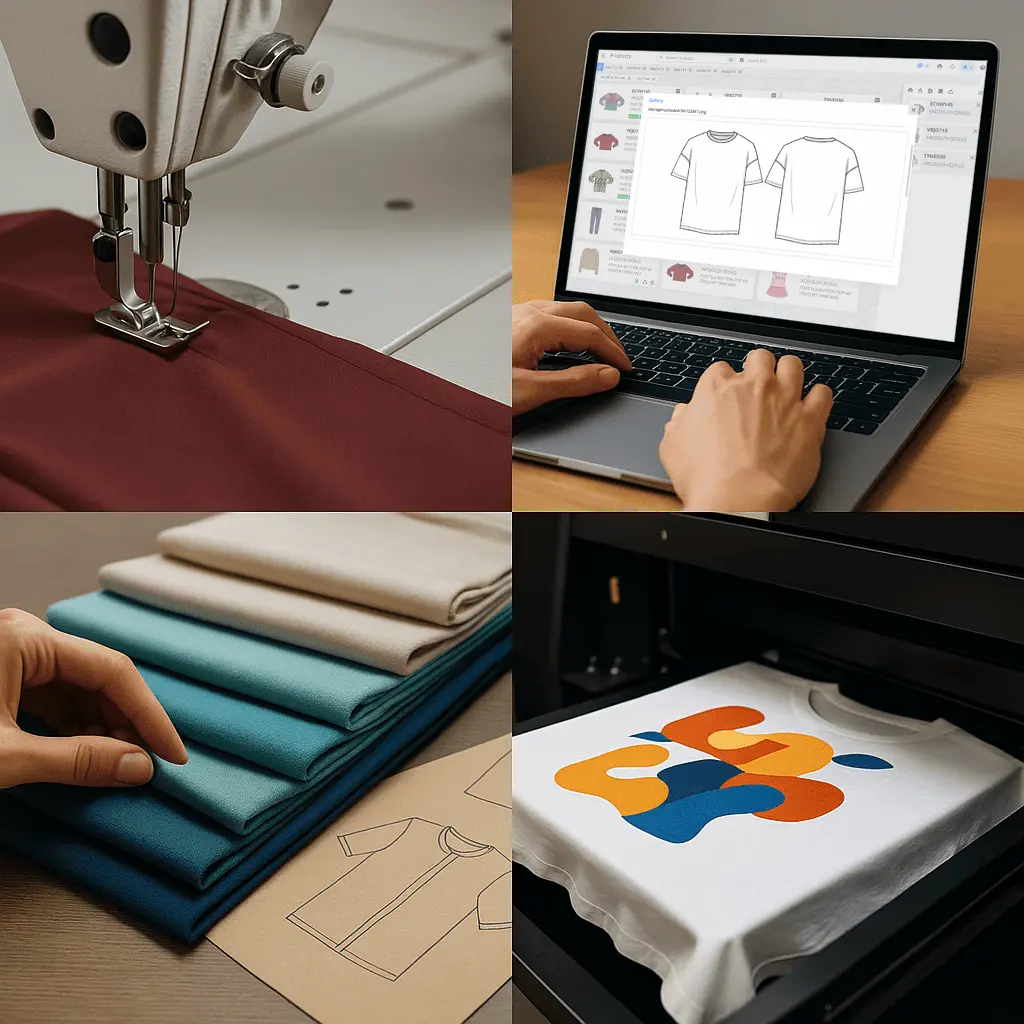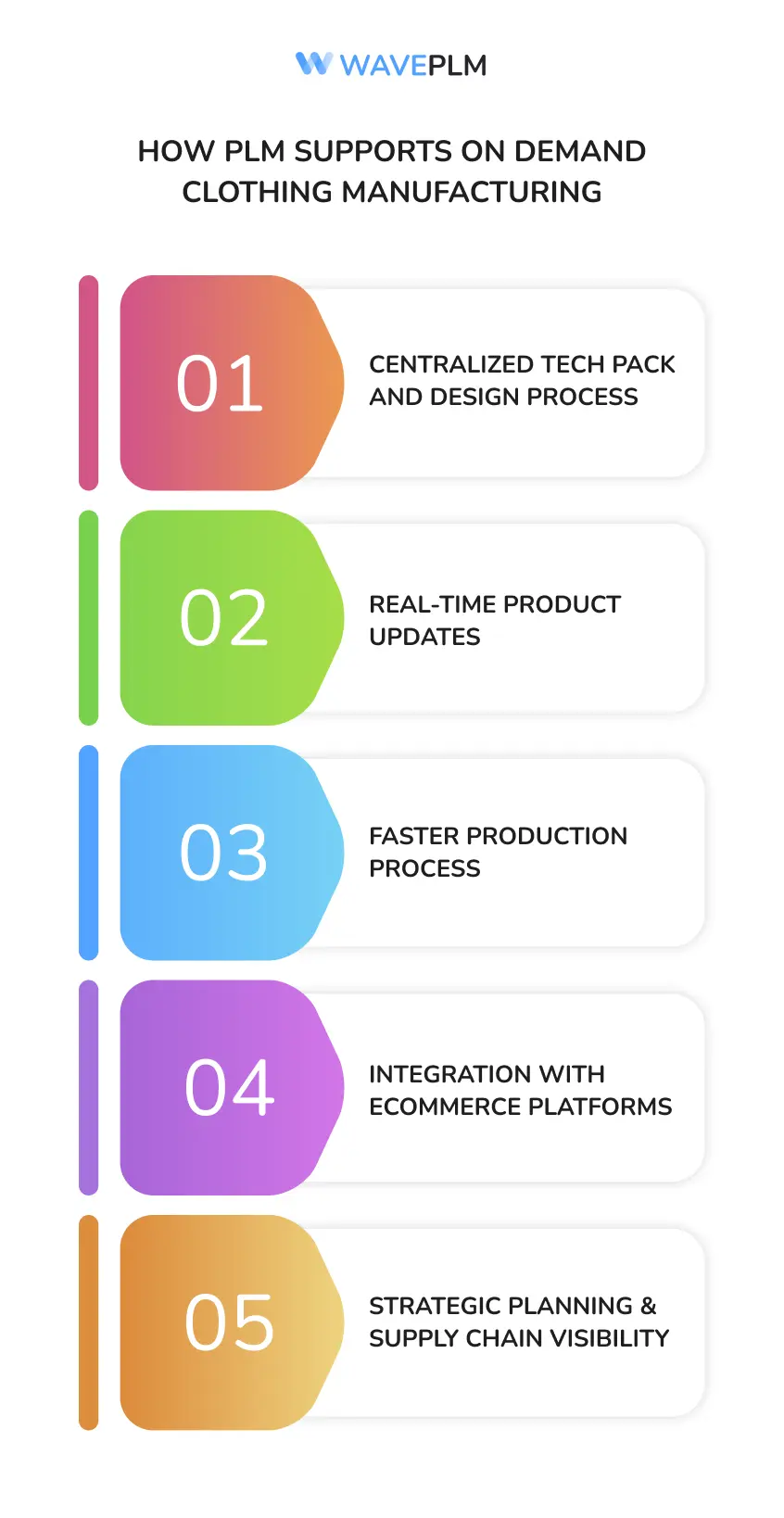
On demand clothing manufacturing is no longer a niche. This on demand model is reshaping the entire fashion industry. With digital tools and a growing focus on sustainability, on demand manufacturing work is helping fashion brands reduce excess inventory, improve customer satisfaction, and lower carbon emissions.
What Is On Demand Manufacturing?
On demand clothing manufacturing means producing items only when customer orders come in. Unlike traditional apparel manufacturing, which focuses on mass production and holding inventory, on demand manufacturing prioritizes speed, flexibility, and personalization.
It enables fashion brands to create garments using digital patterns and precise measurements, eliminating the need for stockpiling finished products that may never sell.
Benefits of the On Demand Production Model
On demand production helps clothing brands reduce over production, increase product quality, and better manage cash flow. Here’s how:
|
Benefit |
Description |
|---|---|
|
Reduced Excess Inventory |
Produce only what customers order. Avoid unsold stock and dead stock. |
|
Lower Storage Costs |
No need to hold inventory in large warehouses. |
|
Shorter Lead Times |
Digital pattern making speeds up the entire process. |
|
On demand manufacturing reduces waste by producing smaller batches. |
|
|
Higher Customer Satisfaction |
Custom apparel offers better fit and customization options. |
|
Minimal Upfront Costs |
No bulk ordering or mass production. |
|
Improved Product Quality |
Produce at scale without compromising the best quality. |
How PLM Supports On Demand Clothing Manufacturing
On demand production relies on streamlined workflows. Fashion brands use Product Lifecycle Management (PLM) software to manage the design process, track customer orders, and reduce turnaround times.
1. Centralized Tech Pack and Design Process
PLM software manages the tech pack and digital pattern making, making the production process more efficient and aligned.
2. Real-Time Product Updates
Changes to the design, digital patterns, or fabric choice can be shared instantly with manufacturers. This ensures demand manufacturing adapts to customer preferences.
3. Faster Production Process
By using 3D digital printing and digital samples, fashion brands can skip traditional sampling steps. On demand manufacturers receive real-time instructions and produce finished products faster.
4. Integration With Ecommerce Platforms
Linking PLM software with ecommerce platforms allows seamless flow from order to delivery. This is critical for print on demand or custom apparel models.
5. Strategic Planning and Supply Chain Visibility
PLM tools give visibility into every step of the manufacturing process. From digital pattern making to shipping times, brands manage the entire process with precision.

Real Examples of On Demand Manufacturing Work
These fashion brands showcase how on demand manufacturing reshapes apparel production:
|
Brand |
On Demand Feature |
Outcome |
|
Printful |
Print on demand for t shirts & more |
No excess inventory. Lower carbon footprint. |
|
Unspun |
Better customer satisfaction. No fabric waste. |
|
|
Son of a Tailor |
Digital pattern + custom apparel |
High-quality garments. Ethical alternative to mass production. |
Challenges of On Demand Production
Even the best on demand production model comes with obstacles:
- Scaling up demand manufacturing while keeping lead times short
- Relying on accurate digital pattern making and tech pack workflows
- Investing in the latest technology for automation and digital printing
But with strong PLM support and a well-planned production model, these challenges become manageable.
Future of On Demand Fashion
The fashion industry is moving toward smarter, cleaner, and faster apparel production. Here’s what’s coming:
|
Technology |
Impact |
|
AI + Predictive Demand |
Reduces over production. Matches designs with market demand. |
|
Automation + Robotics |
Speeds up the manufacturing process. Lowers carbon emissions. |
|
Advanced PLM Tools |
Manage digital patterns, customer orders, and production from one dashboard. |
|
Ecommerce Platform Sync |
Customize and start selling instantly. |
This is not just about convenience. It’s about sustainable business practices, better product quality, and environmental responsibility.
On Demand Manufacturing Checklist for Fashion Brands
|
Step |
Tool |
Result |
|
Create tech pack & digital patterns |
PLM Software |
Ready to create garments without waste |
|
Accept customizations on ecommerce site |
Ecommerce Platform |
Customized clothing per customer |
|
Connect PLM to factory |
PLM + ERP Integration |
Immediate production on demand products |
|
Reduce sampling and waste |
3D Design + Print on Demand |
Lower cost, faster turnaround times |
|
Track the entire process |
PLM Workflow Dashboard |
Visibility of every production stage |
Conclusion: Why the On Demand Model Wins
On demand clothing manufacturing is the future of the fashion industry. It solves old problems like excess inventory, long production times, and high storage costs. It also delivers better customer satisfaction and aligns with sustainable business practices.
With digital tools like PLM software and ecommerce platforms, even small fashion brands can start selling on demand products with minimal upfront costs.
From t shirts to high-end custom apparel, on demand manufacturers enable fashion brands to produce smarter, faster, and cleaner.
This is not just a shift in the production model. It’s a movement toward a more ethical alternative to traditional apparel manufacturing.
FAQs
What is on demand manufacturing? It’s a production model that creates garments only after receiving an order, reducing waste and improving flexibility.
How profitable is clothing manufacturing? With demand manufacturing, you avoid unsold stock and dead stock. That boosts profit margins and improves cash flow.
Does Amazon do print on demand clothing? Yes. Amazon supports print on demand through Merch by Amazon.
How much does it cost to manufacture your own clothes? Costs vary based on fabrics, customization, and tech. On demand production reduces upfront costs and inventory risks.





Leave a Reply